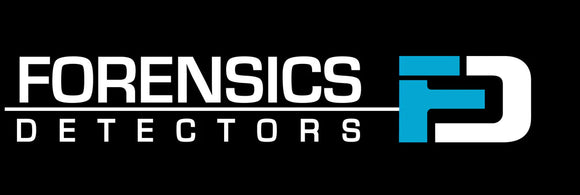FD-60
Calibration of FD-60
Summary:
A step-by-step tutorial on calibrating your FD-60 toxic gas detector.
Model:
FD-60 all versions except FD-60-O2. If you have an oxygen sensor option, please follow the FD-60-O2 calibration procedure.
Calibration Frequency:
At least every 12 months.
Calibration Kit Items Required:
- Calibration Gas Bottle. Select the corresponding calibration gas for your gas monitor target gas.
- Calibration Gas Regulator (C10)
- Tubing
- Calibration Cap
 |
▶️ Tutorial Calibration VideoExample: FD-60-COExample: FD-60-EX
|
Note: Example of Carbon Monoxide (FD-60-CO). Each FD-60 is unique and made to a specific single target gas. Follow this procedure using the recommended calibration gas bottle for your target gas.
✅ STEP 1: ZERO Calibration to 0 ppm using Fresh Air.
- Power on your gas detector and allow 2 minutes for stabilization in fresh air.
- Use your remote control.
- Expose the gas analyzer to fresh air or pure nitrogen for at least 2 minutes.
- If using a N2 gas bottle, use a flow rate of 0.5 LPM.
- The gas detector may or may not read precisely 0 ppm. Depending on the model, it may or may not read 0.0 or 0.00 ppm. To zero calibrate and make it read exactly 0, 0.0, or 0.00 ppm, undertake the following steps.
- Press the "OK" button to go to the Menu Screen.
- Use the remote control arrows. Go down and select "Gas Zero" then press the "OK" button.
- Select the gas sensor you wish to zero calibrate by pressing "OK".
- Then press Save by pressing the "OK" button again.
- Done!
- Return to the main display by pressing the top left "return" button. The unit will now read 0 ppm in fresh air.
✅ STEP 2: SPAN Calibration.
- Ensure you first undertake a Zero Calibration.
- Then, expose the gas analyzer to your calibration reference gas for 2 minutes or until the reading has stabilized. Use a flow rate of 0.5 LPM and connect the gas to the gas detector via the FD-60 calibration cap.
- Press the "OK" button to go to the Menu Screen.
- Use the remote control arrows. Select "Gas Calib" then press the "OK" button.
- Enter passcode: 1111.
- Select the gas sensor you wish to calibrate by pressing "OK".
- Next, you will see a table called "Standard Set" with rows Std.1, Std.2, and Std.3. This unit allows for a sophisticated multi-point calibration. However, for 99% of our customers, only a single span point calibration is warranted. For now, press next and observe the table called "CALIB". See which row is highlighted in light green on the leftmost column. The light green row is the row you will need to go back and edit the Std.1, 2 or 3 rows in the "Standard Set" table. Edit the correct row only and insert the exact value of your calibration gas concentration.
- Then press "Next".
- The display shows the detected gas value in the right column under "Test". Highlight the row you edited with your target calibration value.
- Then press "Save" to lock in the calibration value.
-
The analyzer is now span-calibrated.
✅ STEP 3: Verification
- Allow the gas detector to stabilize in fresh air for 5 minutes, confirming it reads 0 ppm in fresh air.
- Expose the analyzer to the calibration reference gas to verify the calibration and detection repeatability.
- If the gas detector reading is within +/- 2% F.S. of the calibration gas value, this is considered a PASS. For example, FD-60-CO has a full scale of 1000 ppm. The unit was calibrated to a reference gas of 200 ppm. Then, a PASS range is +/-2% of 1000 ppm = +/- 20 ppm. Therefore, a PASS is between 180 ppm and 220 ppm.
- Once verified, your unit is properly calibrated and ready for operation.
- Don't forget to document the calibration event in your gas analyzer log book. Place a reminder calibration date sticker on the unit for the next calibration event.
